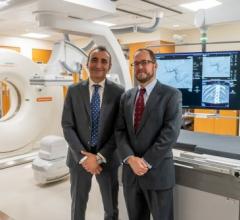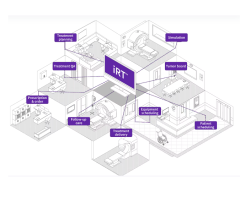January 6, 2009 - Fractionated stereotactic radiotherapy (FSR) in the treatment of cavernous sinus meningiomas facilitates tumor control, either as an initial treatment option or in combination with microsurgery, according to study published in the International Journal of Radiation Oncology.
In the study, Fractionated Stereotactic Radiotherapy Treatment of Cavernous Sinus Meningiomas: A Study of 100 Cases, led by Claude Fabien Litré, M.D., Hopital Maison Blanche, France, doctors discussed their experiences with fractionated stereotactic radiotherapy (FSR) in the treatment of cavernous sinus meningiomas.
Researchers observed 100 patients diagnosed with cavernous sinus meningiomas; 84 female and 16 male patients were included. The mean patient age was 56 years. The most common symptoms were a reduction in visual acuity (57 percent), diplopia (50 percent), exophthalmy (30 percent), and trigeminal neuralgia (34 percent). Surgery was initially performed on 26 patients. All patients were treated with FSR. A total of 45 Gy was administered to the lesion, with 5 fractions of 1.8 Gy completed each week. Patient treatment was performed using a Varian Clinac linear accelerator used for cranial treatments and a micro-multileaf collimator.
There were no side effects reported. Mean follow-up period was 33 months, with 20 percent of patients undergoing follow-up evaluation for more than four years later. The tumor control rate was 94 percent at three years. Three patients required microsurgical intervention because FSR proved ineffective. There was 81 percent improvement in functional symptoms in patients suffering from exophthalmy, and 46 percent of these patients were restored to full health. There was a 52 percent improvement in diplopia and a 67 percent improvement in visual acuity and a 50 percent improvement in type V neuropathy.
The researchers concluded that FSR facilitates tumor control, either as an initial treatment option or in combination with microsurgery, and that in addition to being a safe procedure with few side effects, FSR offers the significant benefit of superior functional outcomes.
Source: International Journal of Radiation Oncology, Dec. 2008.
For more information: www.redjournal.org


 December 04, 2025
December 04, 2025 









